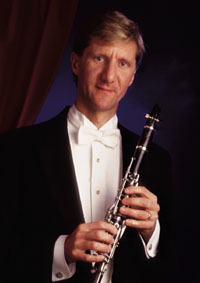Legato playing, the smooth connection between notes in a musical line, is difficult on any instrument. Piano has more difficulty playing legato, since it’s basically a percussion instrument. Voice wins easily for the most true legato, since the larynx can shift subtlety from note to note with a pure connection.
You would think wind instruments, begin fairly close to the voice in their use of air to phrase, would have an easy task with legato. But the physical fact of a finger or pad covering a hole to change the length of the vibrating column commits an act of minor violence to it.
To compensate for this limitation, many woodwind players “chew” on each note with their air to give the impression of legato. The legato then turns into “wa-wa-wa” instead of a smooth line “wa-a-a”. Yet, though this alleviates the symptom of a note changing with a clunk, this quick fix doesn’t really solve the problem. Rather, it creates other problems, namely tension in the air column and lack of direction in the phrase.
During my studies at Northwestern with Robert Marcellus and Clark Brody, I learned the mechanism for the best possible legato on the clarinet. The key is in the steadiness of air support. This may seem obvious, but it’s actually very difficult to do. Remembering the “violence” of moving from note to note, and keeping in mind that each note will resonate differently depending on which holes are opened or closed on which part of the instrument, keeping the air steady is more elusive a task than it may seem. Our ears tend to tell our bodies to “wa-wa” to cover the clunkiness of notes changing. Our bodies will tense and flinch in anticipation of the sudden change in tone and resonance. So how do we resolve these issues?
To create beautiful legato on the clarinet, one must override these urges and discipline the body. The first step is to ensure one is using the highest quality support. This simple act takes years to master. The air must be released and sent into the instrument using the whole torso and diaphragm in a harmonious motion. (This will be the subject of another post) When this is accomplished, one must consciously play “one note” with the air while moving the fingers with disciplined commitment. Most importantly, one must summon the courage not to flinch as the note changes. This detail takes a great deal of self-awareness, since the tiny movements of embouchure, air and fingers are barely noticeable, especially if one has been unconsciously adjusting to alleviate the bumps between notes.
As an exercise, one might play a single note and imagine playing a simple scale. The fingers do not move, but the mind pretends they are, helping separate the integrity of air and embouchure from the air. Then play the scale very, very slowly, moving the fingers extremely slowly, so as to explore each muscle movement in every detail. This may cause some fuzziness or dead space between notes, but the exercise will accomplish its goal of giving the player full awareness of the movement. Meanwhile the air must remain a pure stream as it was during playing one note. Lastly, be aware of any changes in embouchure and override them. Play “coldly”, like a machine.
Ultimately, when the motions of the three components of legato are separated, namely air stream, fingers and embouchure, the player will have a chance to idealize the connection between notes. Flinching the embouchure and air will be reduced to the minimum necessary to “voice” the next note, no more. The fingers will move with disciplined commitment, with no unnecessary violence of movement. Then the player may give the smoothest direction possible to the line of the phrase, creating a clear, musical statement of intent and direction.




